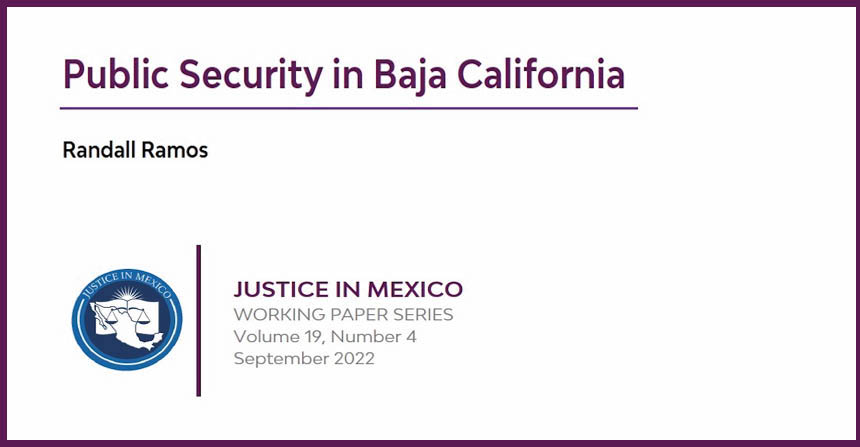
02/25/13 – Mexico’s National Security Cabinet (Gabinete de Seguridad Nacional) revealed the emergence of new drug trafficking organizations (DTO) that have formed after splintering from pre-existing cartels, groups that have taken root in the central and north of Mexico. The government reports that these new organizations–Sangre Z, Golfo Nueva Generación, and La Corona–seem to have arisen in part from Los Zetas, the Gulf Cartel, and the Sinaloa Cartel, respectively, DTOs that, due to their size and scope, have given way to splinter groups. In all of these cases, the splintering followed the arrest or killing of key cartel operatives, as was central to the strategy of former President Calderón in confronting Mexican DTOs. According to La Jornada, sources from the Attorney General’s Office (Procuraduría General de la República, PGR) say that their investigations into the new groups indicate that these cartels are well organized and well equipped with fire arms. They are thought to be generating revenue through drug trafficking and by charging drug traffickers who pass through their routes on their way north to the United States. However, the PGR noted that unlike Los Zetas, the new groups do not seem involved in human trafficking nor in extortions.
Splintering within criminal organizations is not uncommon, especially among the groups from which government officials are reporting the new cartels have broken. According to La Jornada, the original Gulf Cartel, which started back in the mid-1900s, saw its military trained branch, Los Zetas, fracture off in 2010. Furthermore, the report continues, after serious ruptures in the Gulf Cartel’s leadership between 2010 and 2012, including the death of Antonio Ezequiel “Tony Tormenta” Cárdenas Guillén in 2010 and the arrest of alleged Gulf Cartel leader Mario Cárdenas Guillén in 2012, the organization lost some of its internal control and regional grip on drug trafficking, resulting in the emergence of the Golfo Nueva Generación in 2012. For its part, the Zetas had serious infighting within its organization as Miguel Angel Treviño Morales, or “Z-40,” the Zetas’ second in command, disputed with Zetas founder Heriberto Lazcano Lazcano, who in turn was eventually killed in October 2012 by the Mexican Navy (Secretaría de Marina, SEMAR). La Jornada continues, reporting that the rise of Sangre Z resulted from the division among the Zetas leaders the past year. Finally, the third newly identified organization, La Corona, has allegedly emerged from the Sinaloa Cartel, a drug trafficking organization that itself saw La Resistencia (The Resistance) and Cartel de Jalisco Nueva Generación (Jalisco New Generation Cartel, CJNG) break away from its control in 2010, as well as the Beltrán Leyva Organization two years before. The Beltrán Leyva Organization itself only exists today through its splinter groups, a result of Calderón’s “decapitation” strategy that led to the killing of leader Arturo Beltrán Leyva by the Mexican Navy in 2009, and subsequent breakdown of the organization into smaller factions. La Jornada reports that members who broke from the Sinaloa Cartel to form La Corona did so after the Sinaloa Cartel’s leader, Ignacio “Nacho” Coronel Villarreal, was killed in 2010.
Sangre Z, Golfo Nueva Generación, and La Corona are allegedly making grounds in the center and north of Mexico, while the relatively new Independent Cartel of Acapulco (Cartel Independiente de Acapulco, CIDA) works to control the south. The CIDA is yet another example of recent cartel splintering in Mexico. As reported by the Trans-Border Institute’s recent publication, “Drug Violence in Mexico: Data and Analysis Through 2012,” the CIDA is a group thought to have formed back in 2010 when Edgar “La Barbie” Valdés Villarreal, a U.S. citizen who had taken control of a splinter group that broke from the Beltrán Leyva Organization in 2009, was detained, further dividing his faction into two new rival organizations, one of which being the CIDA that formed in November 2010 under Carlos Antonio “El Melón” Barragán Hernández, and Moises “El Coreano” Montero Álvarez, who was arrested in August 2011. (The full report can be read here.)
With the emergence of the new groups, the federal government estimates that roughly 70 drug-trafficking and criminal organizations control the drug trade in regions throughout Mexico. Mexican Interior Minister Miguel Ángel Osorio Chong spoke on the matter, stating that Joaquín “El Chapo” Guzmán–the leader of the Sinaloa Cartel and Mexico’s number one king pin–is “the most important focus for us, but we can’t lose sight of the rest.” He continued with, “There are many others who are very important at the regional level that cause serious problems of violence, and we are pursuing them.” Most recently, speculation arose about whether Mexico’s most wanted man, El Chapo, was killed in a shootout with Guatemalan officials. Although El Chapo’s death would have been a huge blow to one of the strongest cartels in Mexico if it were true, the story was unverified and Guatemalan government officials confirmed El Chapo was not killed. (To read more about the story, click here).
Sources:
“Identifican tres poderosos cárteles emergentes en México.” El Universal. February 17, 2013.
“NacenTres Carteles Desertores de otras Bandas.” Sexenio Nuevo León. February 18, 2013.





Pingback: Mexico’s drug cartels and their areas of operation, a 2014 update | Geo-Mexico, the geography of Mexico